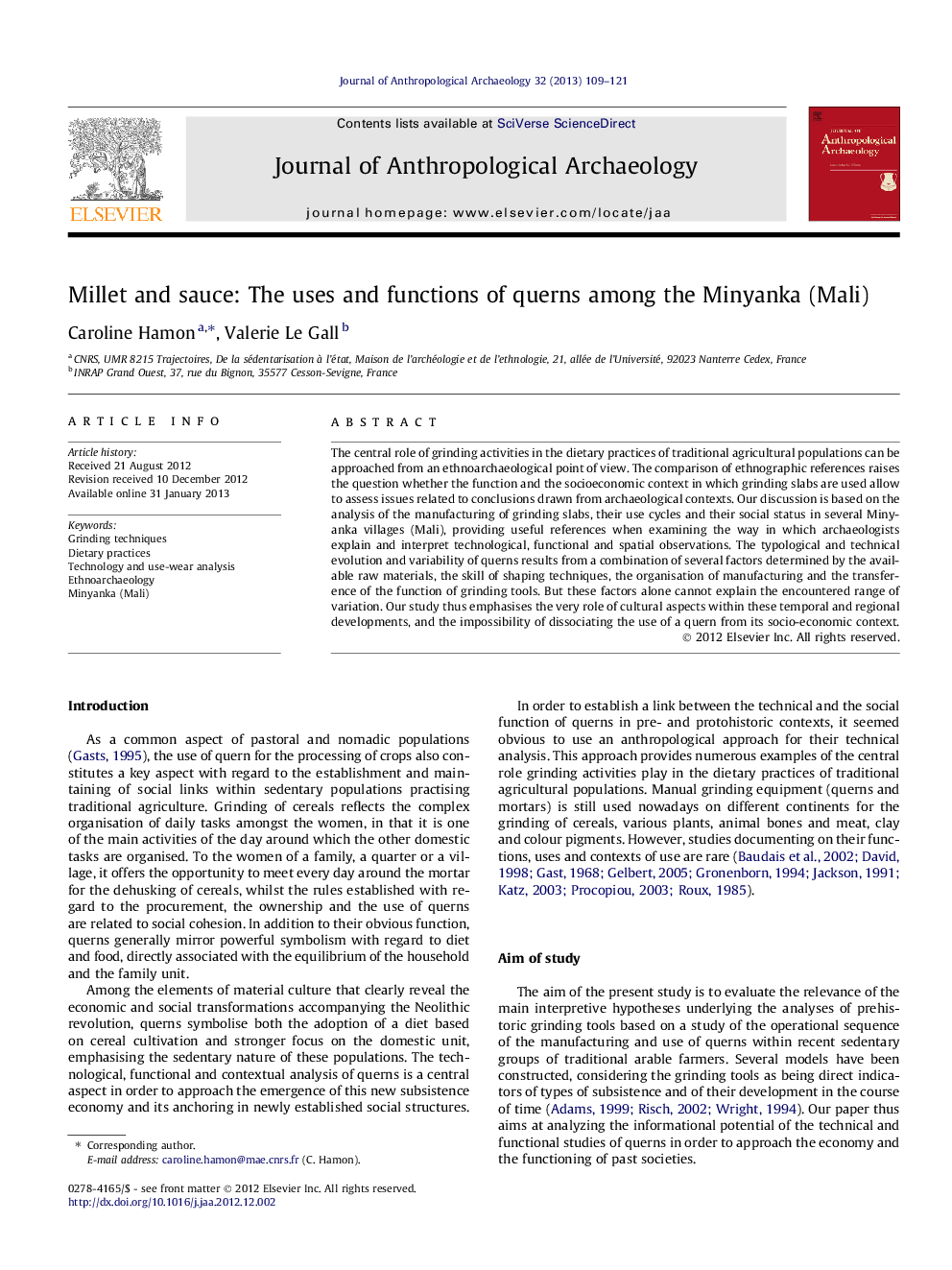| Article ID | Journal | Published Year | Pages | File Type |
|---|---|---|---|---|
| 1034984 | Journal of Anthropological Archaeology | 2013 | 13 Pages |
The central role of grinding activities in the dietary practices of traditional agricultural populations can be approached from an ethnoarchaeological point of view. The comparison of ethnographic references raises the question whether the function and the socioeconomic context in which grinding slabs are used allow to assess issues related to conclusions drawn from archaeological contexts. Our discussion is based on the analysis of the manufacturing of grinding slabs, their use cycles and their social status in several Minyanka villages (Mali), providing useful references when examining the way in which archaeologists explain and interpret technological, functional and spatial observations. The typological and technical evolution and variability of querns results from a combination of several factors determined by the available raw materials, the skill of shaping techniques, the organisation of manufacturing and the transference of the function of grinding tools. But these factors alone cannot explain the encountered range of variation. Our study thus emphasises the very role of cultural aspects within these temporal and regional developments, and the impossibility of dissociating the use of a quern from its socio-economic context.
• We study the function of querns in a nowadays farming society in Mali. • We compare querns variability in ethnographical and archaeological contexts. • Archaeologically, technological and use-wear analysis can stress querns multifunction. • The conditions of use of a quern depend on its social background. • Querns function is closely linked to the distribution of tasks in the domestic space.
